Garmin Vivosport Review
Garmin Vivosport Review
A great all-round GPS fitness tracker
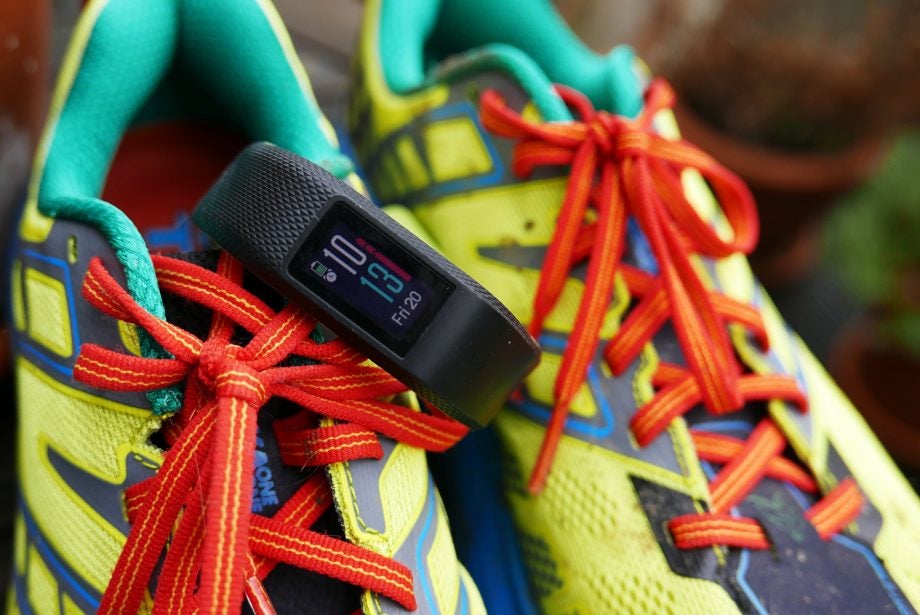
Verdict
Pros
- Comfortable design
- Accurate GPS and HRM
- VO2 Max estimations
- Good battery life
Cons
- Rep counting is still tacked on
- Washed out display
- Slightly buggy automatic exercise tracking
Key Specifications
- Review Price: £169
- Built-in GPS and HRM
- Stress-level monitoring and guided breathing exercises
- VO2 Max estimations and Fitness Age
- Rated 7-day battery life
- Water-resistant to 50m
- Smartphone notifications
What is the Garmin Vivosport?
The new Garmin Vivosport can be considered a follow up to one of our favourite GPS-equipped fitness trackers in recent years, the Garmin Vivosmart HR+. It now has a slightly more fun design, alongside a new colour touchscreen display. You can almost consider the Vivosport an amalgamation of the Garmin Vivosmart HR+ and Garmin Vivosmart 3 (yes I get as confused as anyone by all the models), bringing the strength training rep counting, stress-level monitoring and guided breathing exercises of the latter. Once again, the Vivosport is water-resistant to 50 metres, making it perfectly safe to take into the pool, and has great battery life of up to seven days.
You also get useful metrics such as VO2 Max estimations, Fitness Age score, an improved Garmin Connect companion app and useful smartphone notifications. These all combine to make Garmin Vivosport a great fitness companion for runners and fitness enthusiasts looking to take exercising more seriously.
Related: Best fitness trackers
Garmin Vivosport – Design and comfort
The Vivosport follows in the footsteps of the aforementioned Vivosmart models with a slim design that’s available in a few different finishes. They all have a black front, but there are options with a lime green or red accent on the underside for some extra visual flourish. The Vivosport is very much in keeping with Garmin’s rather utilitarian designs. While the likes of Fitbit have increasingly tried to dress up their fitness trackers with customisation and more discreet designs, Garmin simply embraces them for what they are – pieces of tech rather than fashion-first devices. At 10.9mm thick, it’s not the most slender, but it is at least less chunky than the Vivosmart HR+.
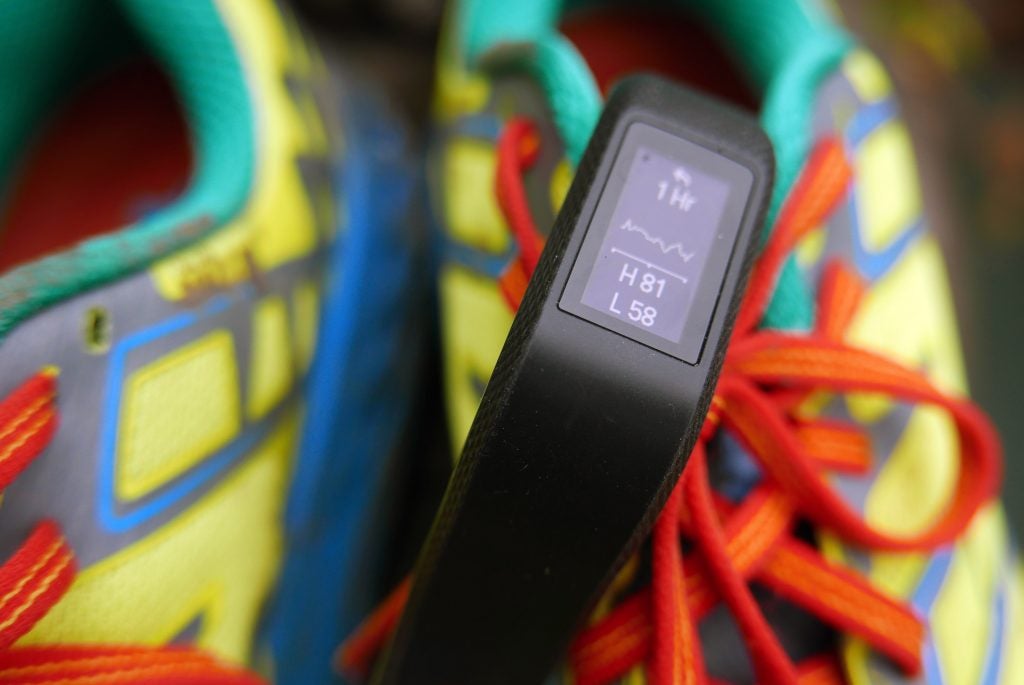
As such, aside from deciding on whether you want a little bit of colour, the only other decision is what size. The Vivosport uses a standard watch buckle and, as the silicone bands aren’t replaceable, you’ll need to pick the right size for your wrist at the time of purchase. If it helps in deciding, I have small wrists and I was still able to wear the large option set to the tightest setting. The band has a good amount of stretch to it, much like the Vivosmart 3, so it feels really comfortable even when you’re wearing it tight for better contact with the optical heart rate monitor on the back.
The Garmin Vivosport has a glass coated display, which feels lot nicer than the plastic on the Vivosmart 3. The display uses a transflective memory in pixel display with a 72 x 144 resolution. What sets it apart from the Vivosmart models is that it’s now colour. In practice, it doesn’t really make much difference. The graphics and interface are so basic, and the backlighting so low quality that any colour gets washed out anyway. Next to the similarly-priced Samsung Gear Fit2‘s Super AMOLED display the difference couldn’t be more night and day.
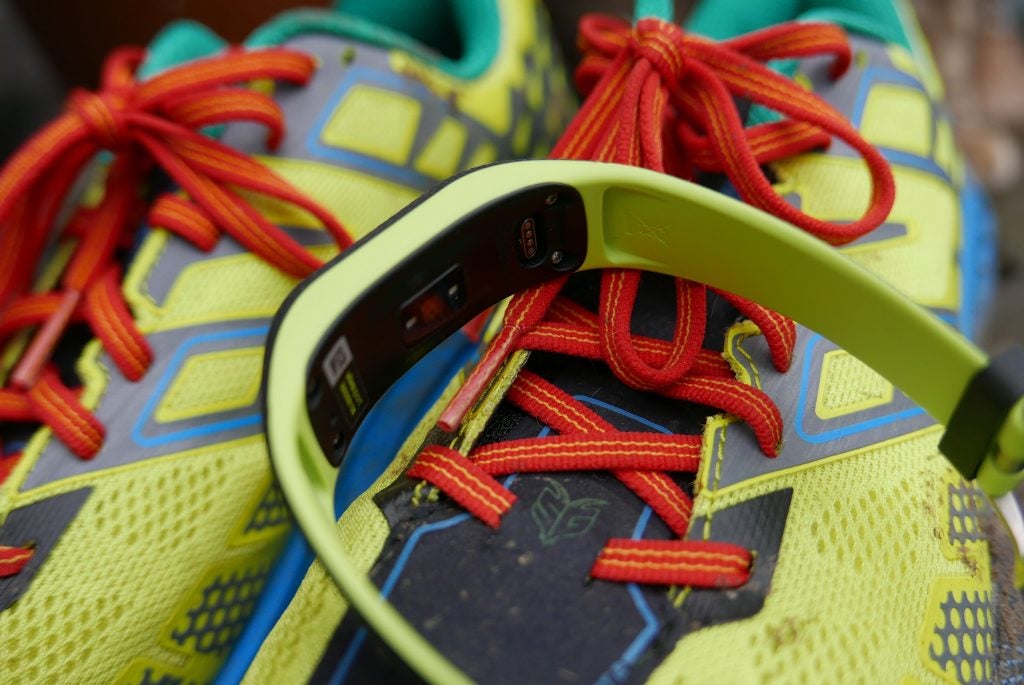
The interface used to navigate menus and interact with the Vivosport is identical to the Vivosmart 3. Everything is organised in a vertical menu you swipe up and down to scroll through. Screens display how many steps or stairs you’ve climbed and provide useful shortcuts to media controls for your paired smartphone as well as the weather.
A long press of the display brings up another menu where you can begin tracking an activity or change settings. While it takes some getting your head round, mainly because some menus and options are just represented by slightly vague icons, it begins to make sense after not too long.
The one annoyance I encountered early on in testing compared to the Vivosmart 3 is that the long-press interaction is now really easy to do by accident. Possibly due to the glass coating rather than plastic. Apparently I cross my arms a lot, which I only began to notice when wearing the Vivosport as resting my opposite forearm over the screen triggers the menu and makes the Vivosport vibrate. In fairness, there’s an option to automatically lock the screen after a short period, wherein a double-tap then wakes it up.
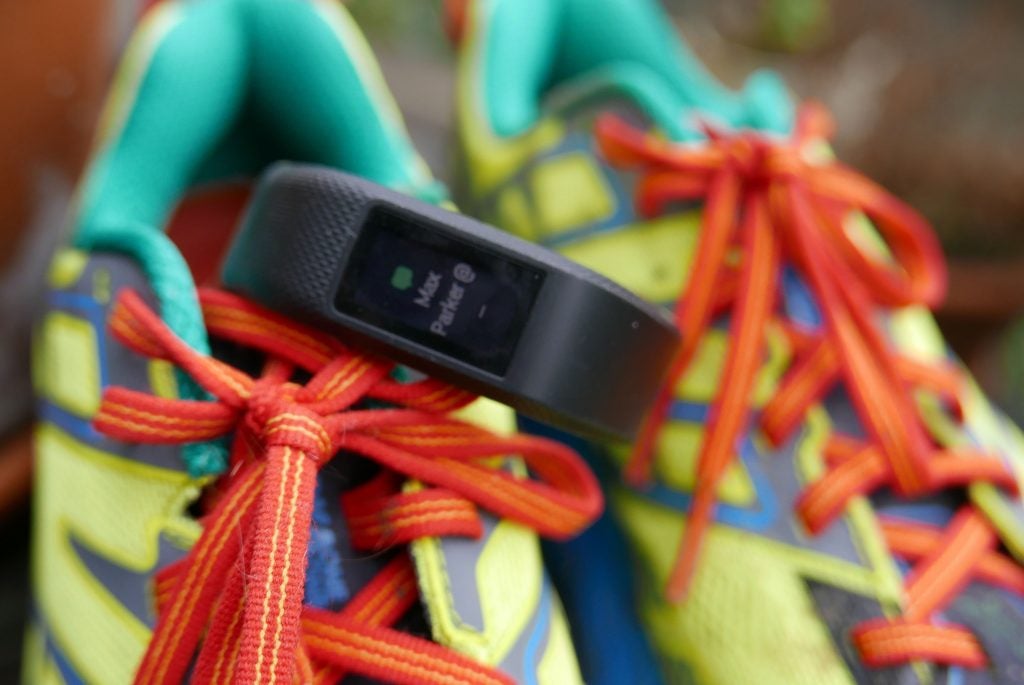
You can also get notifications mirrored from your smartphone. It’s a good way to know what’s causing your phone to buzz but actually trying to read anything on the slither of a display is going to be frustrating.
Garmin Vivosport – Activity tracking and app
The Garmin Vivosport pairs with the Garmin Connect app for Android and iOS and finally it’s had a new lick of paint. I’ve lost track of how long I’ve complained about Garmin Connect’s lack of approach-ability but now a newly revamped My Day screen shows you all the pertinent information in one place, clearly laid out in a cards-based interface. In the past you had to swipe horizontally across what felt like a million different screens to find what you wanted or just to get a quick update on your progress.
The newly updated My Day is actually still in an open beta that you’re prompted to try out in the app. There’s the option to go back to the old version although I see no reason you would want to. The new My Day feels much more dynamic, updating your day’s progress towards each goal with a simple check mark to let you know if you’ve already achieved it or quick at-a-glance information for everything else such as your heart rate or stress level. Tapping each metric then acts as a shortcut to get more information.
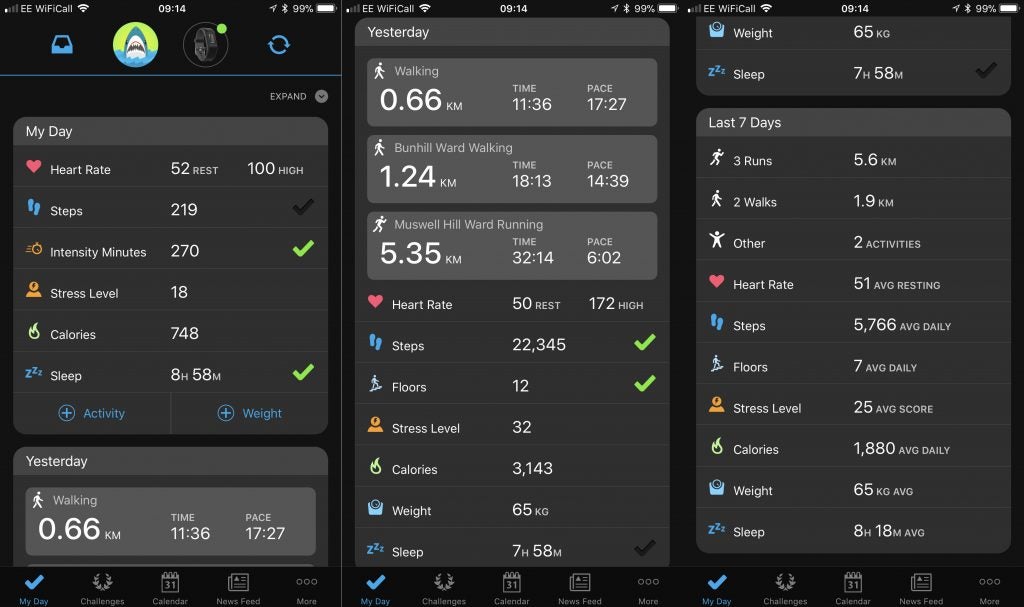
Your individual workout details are also stored as cards, which are automatically expanded when viewed on the same day, making it easier to see the important details. Historical workout data is minimised so the My Day screen doesn’t become too long, but again can be tapped to bring up the full details. It all makes far more sense from a user standpoint.
The day-to-day activity tracking isn’t dissimilar to the Garmin Vivosmart 3 for the most part. Obviously the biggest differentiation is the built-in GPS, which means far more accuracy when tracking outdoor workouts.
Related: Best running watches
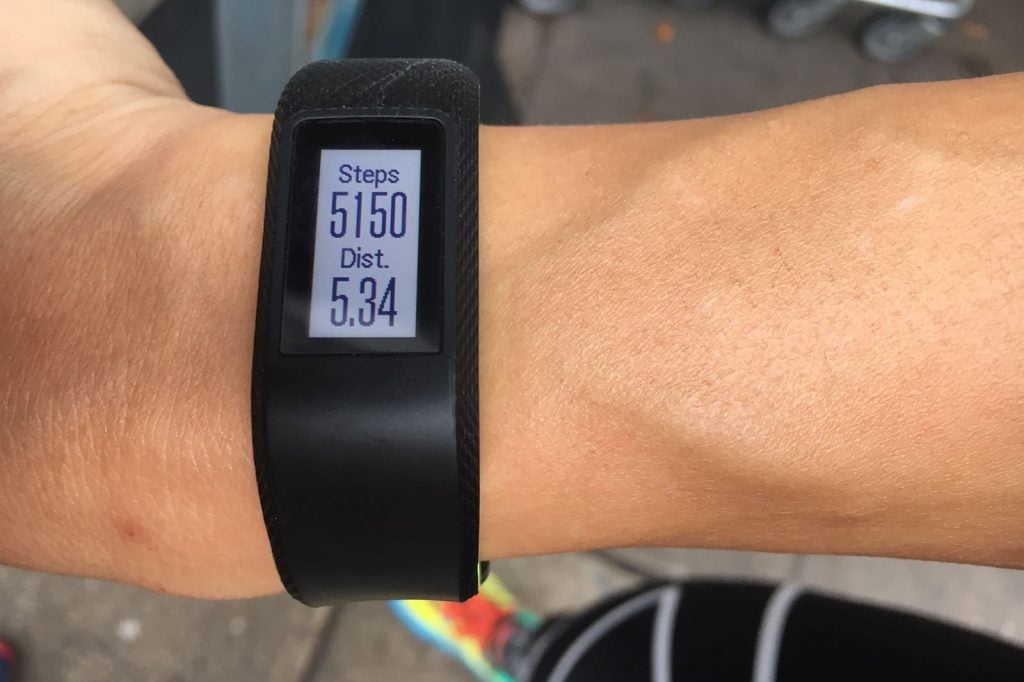
Returning are the dynamically updating step goals, meaning your target number feels a little less arbitrary. If you’re consistently hitting your target steps, the Vivosport will gradually begin increasing it, adding some stealthy linear progression into the mix. Conversely, if you’re frequently falling short, it will reduce the target so that you start to feel that rewarding buzz of achieving a goal again, helping to add some motivation back in. You also get Move reminders that nag away at you to not stay too sedentary during the day.
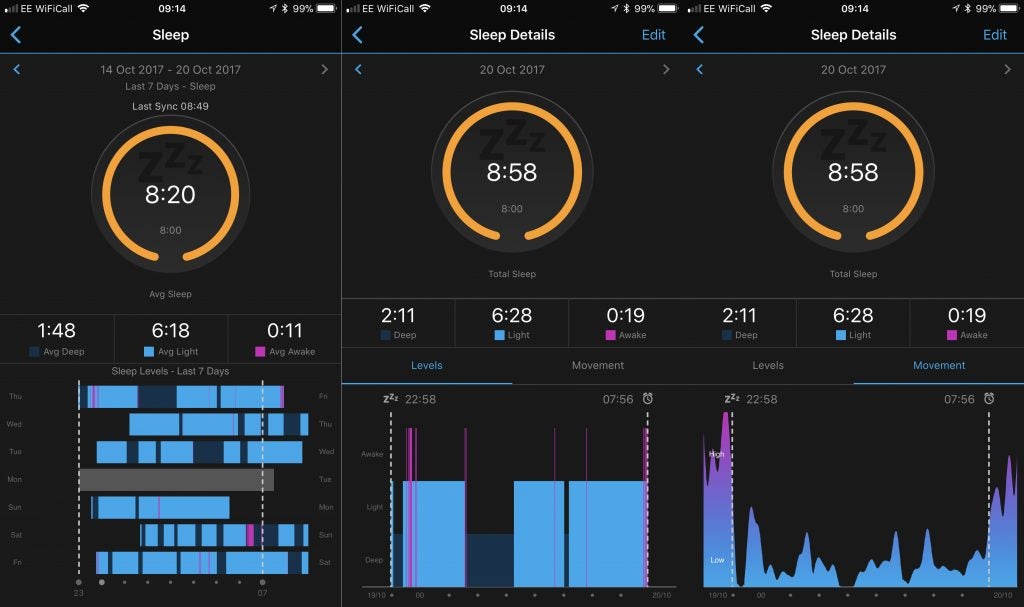
The sleep tracking is also good for the most part. I still like how the 7-day overview makes it easy to identify shifting trends in when you go to bed and wake up. It makes it easy to spot if your sleeping patterns are out of whack. It doesn’t go into quite as much detail as Fitbit’s sleep stages, though, breaking down your sleep into only time awake, in deep sleep and in light sleep. Fitbit also shows time spent in REM sleep. The app still doesn’t really tell you enough about what the numbers mean in terms of quality of sleep. Fitbit benchmarks you against other people in your demographic, making it easier to understand the quality of your sleep as it’s not just about duration, but this is absent here.
Related: Best mattress
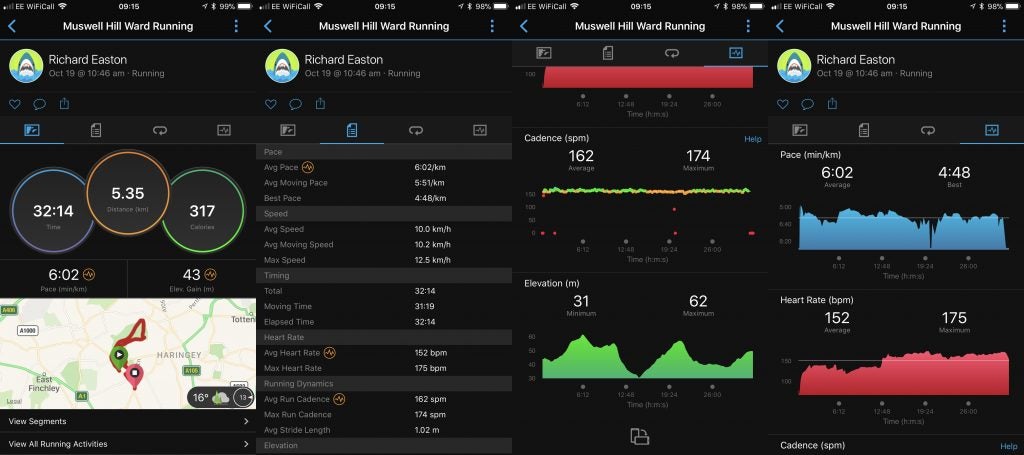
I found the GPS tracking worked great, getting the distances right each time and I didn’t struggle in some of the more dense wooded areas where I run near home, nor with the abundance of tall buildings near the office. Distances were consistent with what I was finding from an Apple Watch 3 I was also wearing. Swiping across the display during a run you get data on your duration, calories burned, pace, heart rate and heart rate zone.
Initially, I was having some big problems with the accuracy of the heart rate monitor. Even when not exercising, I was seeing 100+BPM readings just stood on a train. Considering I wasn’t having a pulmonary embolism, this was clearly wrong.
Related: What are heart rate zones?
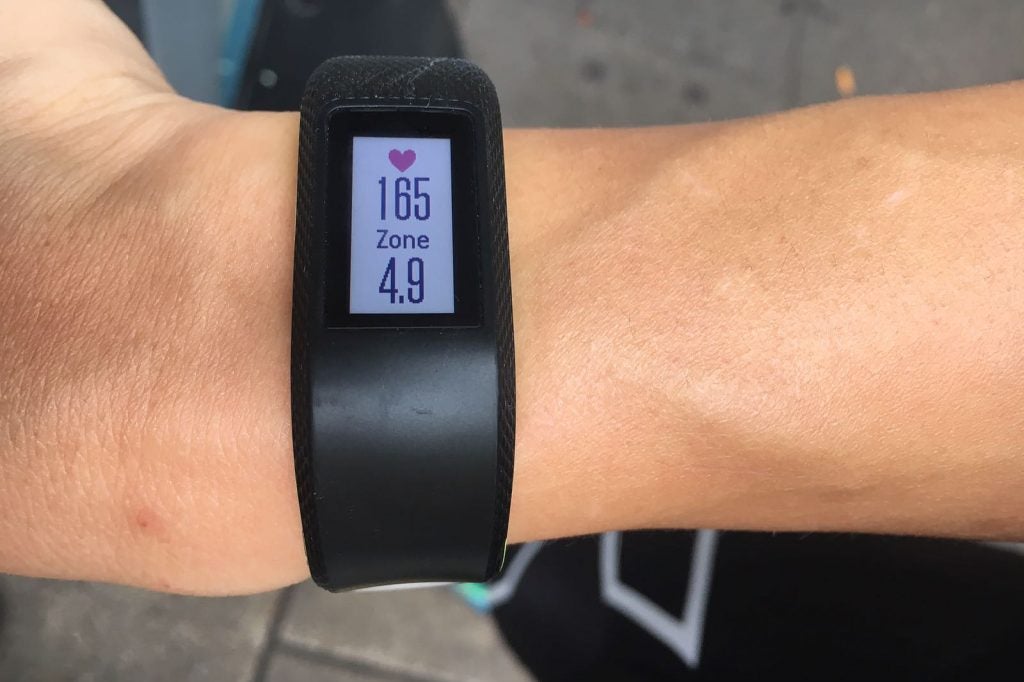
In truth, I’m not sure what happened, but after the first few days the heart rate monitor seemed to have fixed itself. It could have been a software update (the app doesn’t really make it obvious when one is installed) but it doesn’t really matter why, I’m just glad it fixed itself.
After this I found the resting heart rate and readings throughout the day were in line with what I expected. Even on test runs I found the Vivosport to be within 3-4BPM with a Polar OH1 dedicated heart rate monitor I was wearing on my forearm, which is good. It’s not the quickest to update its live reading if you enjoy HIIT but that’s the case for many wrist-based optical HRMs so I won’t knock it too much.
The HRM data is also used by Garmin to calculate your VO2 Max as well as assign you a Fitness Age. Both of these are great ways to keep an eye on your overall fitness level. There’s also the all-day stress level and relax timer. This is a lot like the breathing exercises on the Apple Watch, Fitbit Charge 2 and Fitbit Blaze.
Related: What is VO2 Max?
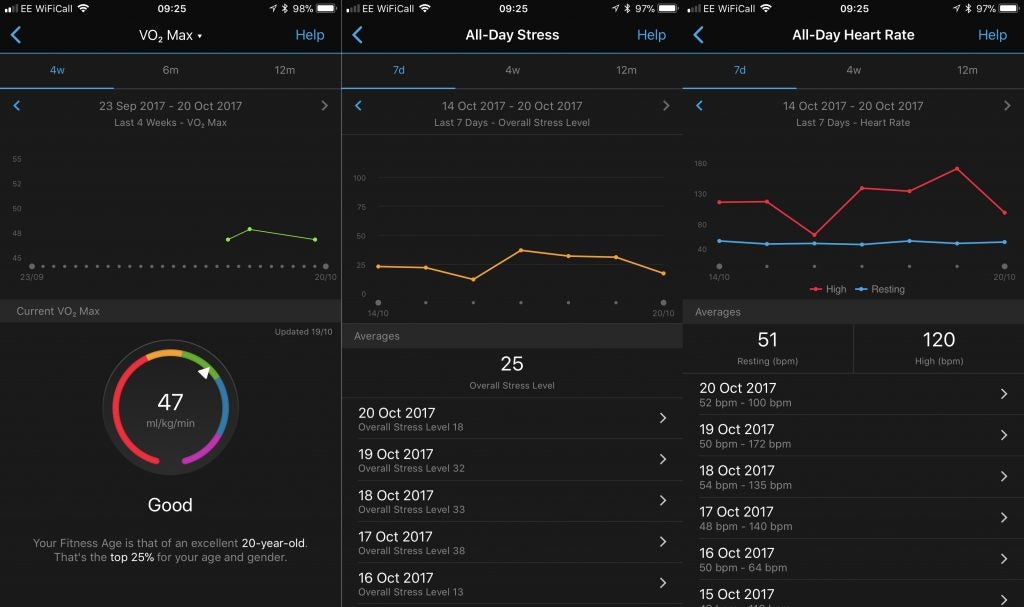
There’s automatic exercise tracking for popular exercises like longer walks, running, cycling and the elliptical machine but I found it could be a little hit and miss. I went for an hour long walk and for some reason this got broken up into small chunks at rather random intervals. The steps all added to my tally, so it’s not a big deal not to have extra walking workouts recorded. I’ve also had a few random elliptical workouts logged. I’m not sure what I was doing at the time, but I certainly haven’t been near an elliptical machine in forever (even if there is an argument I should).
Finally, there’s automatic rep counting for strength workouts. Like the Vivosmart 3, this worked for the most part, but actually logging the exercise requires you to do this in the app, so it all becomes far too fiddly to make it worthwhile.
Garmin Vivosport – Battery life and charging
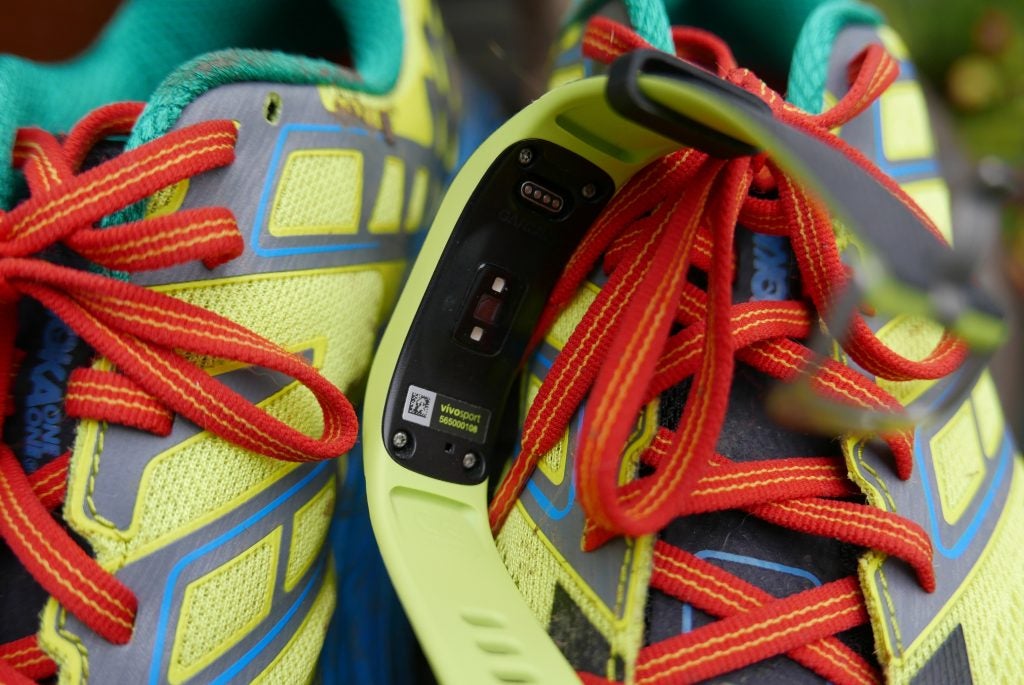
Garmin rates the battery life at up to seven days. In reality, I found I got closer to around 5-6 days with a lot of smartphone notifications buzzing away. That’s still very good stamina. You can expect about 8 hours of continuous GPS tracking, which is also pretty good. To charge the Vivosport you just clip the proprietary USB cable to the back. It clicks in rather than uses magnets, so it stays nice and secure.
Why buy the Garmin Vivosport?
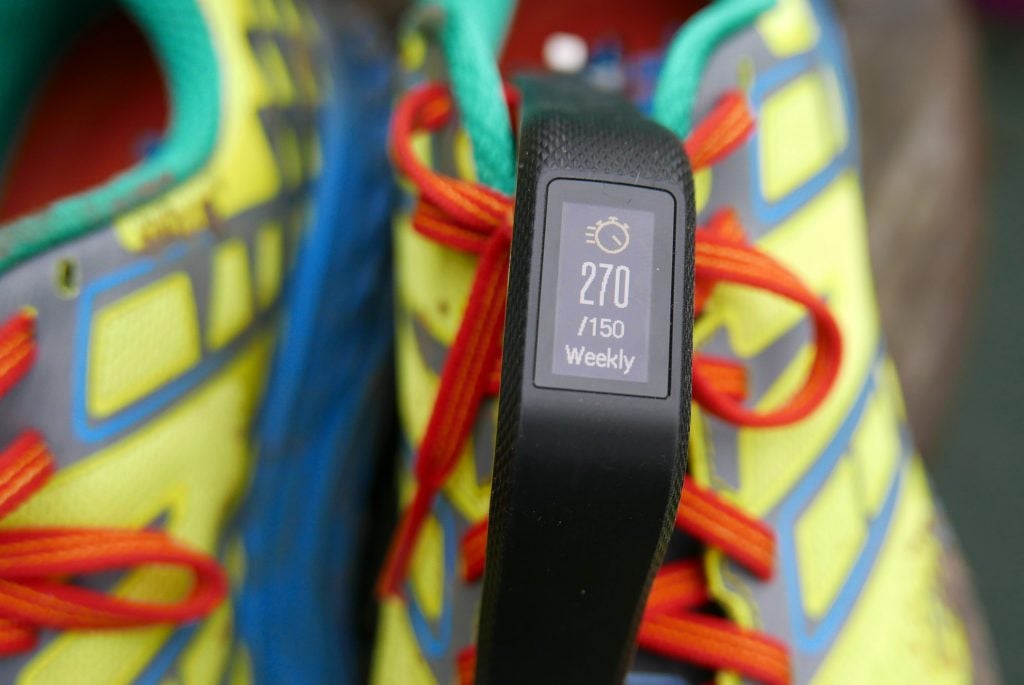
If you feel your workouts will benefit from the added insight and accuracy of GPS, the Garmin Vivosport is a great choice. It’s comfortable to wear, not too chunky and has great battery life. The fact that it’s water-resistant is also great. I’m also stoked that Garmin Connect has finally had some work done to make it easier to use. Garmin being Garmin, the Vivosport still isn’t much of a looker, though, and I really hope they start mixing things up with their designs soon.
If you’re looking for something with a bit more smartwatch smarts, consider the Samsung Gear Fit2, which similarly has GPS. Its Tizen operating system, delightful screen and array of apps makes it more versatile at the expense of some of the more dedicated sport functions of the Vivosport.
Verdict
A great all-round GPS fitness tracker for those not fashion focused


